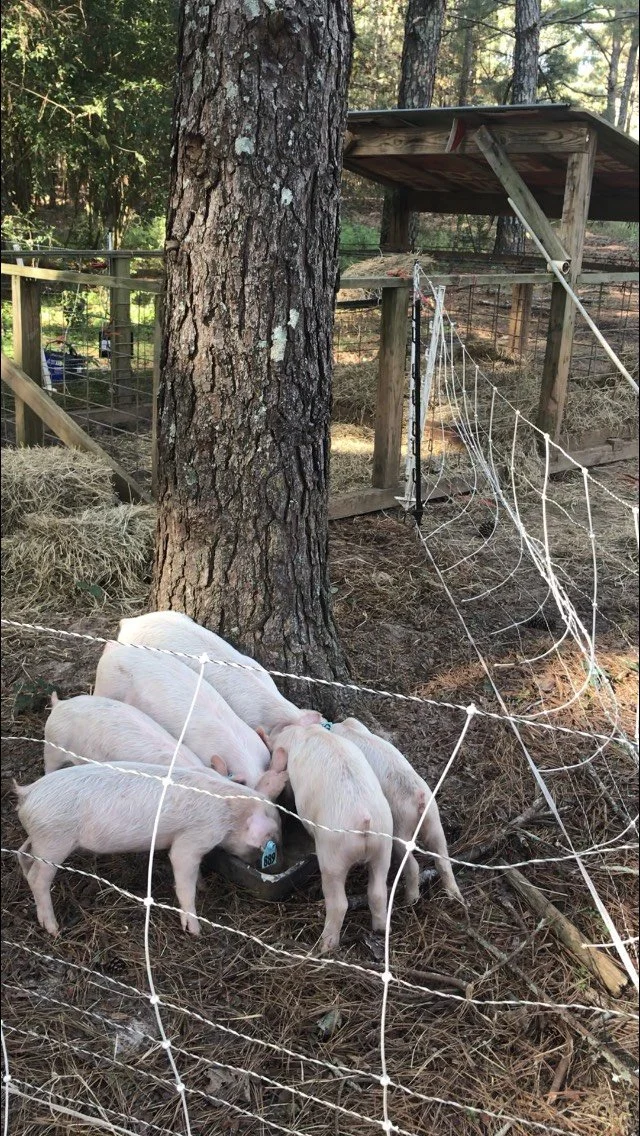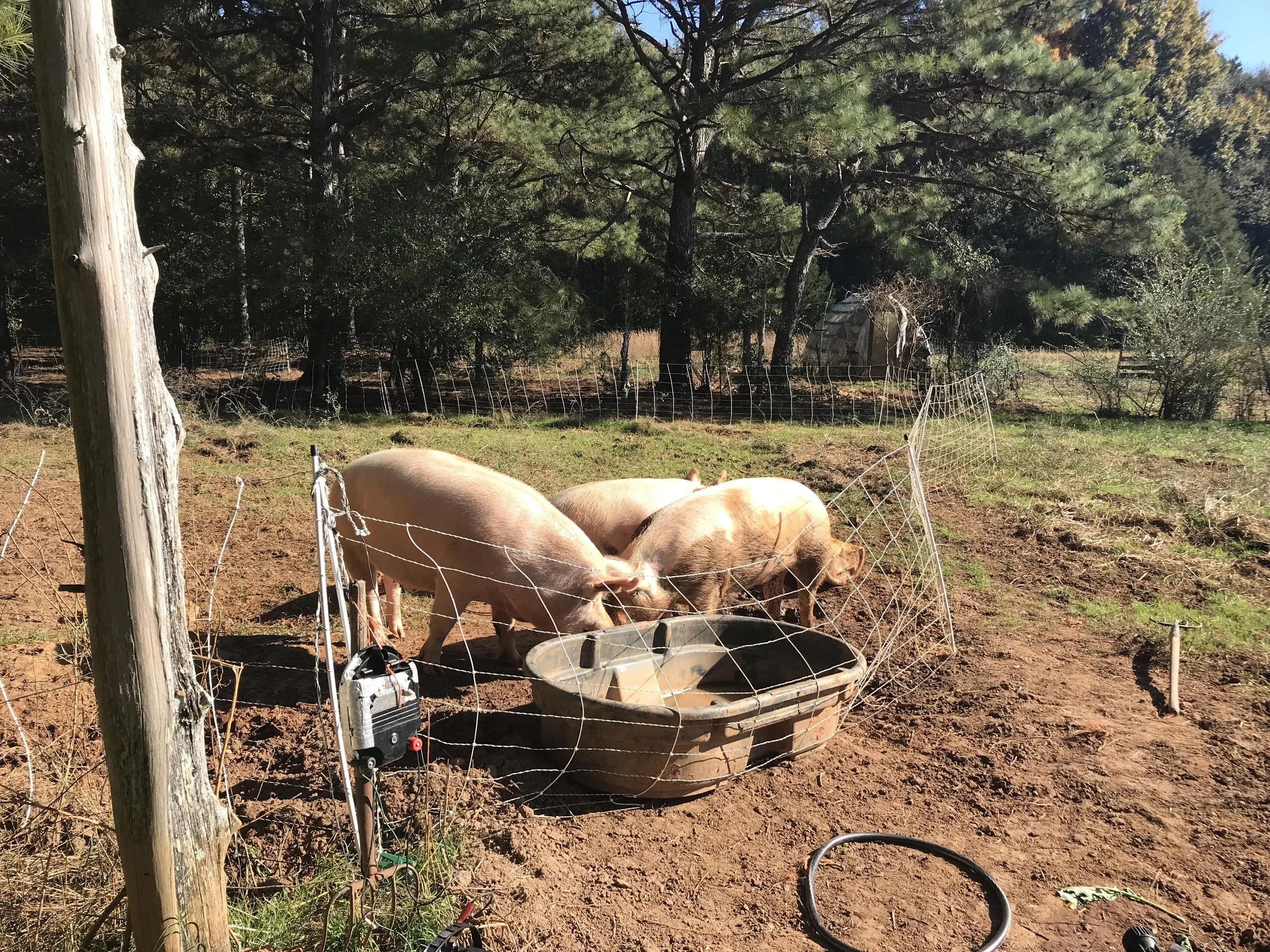Multi-species flourishing is a concept popularized by social theorists Anna Tsing and Donna Haraway to describe a state of being, counter to capitalism, where more than one species enjoys a quality life and well-being. This is necessary, they argue, to reset what capitalism and its zero sum game relations, has put asunder and to envision life beyond the limits of economic rationalities. My last blog posts focused on love and caretaking and I think these are essential elements to raising all animals for consumption (or otherwise) when the goal is ensuring multi-species well-being.
Bill Perry, star of last week's post, continues—or rather his pigs, continue to be—in the spotlight of this week's post. When I was taking pictures of his sheep for my forthcoming book, The Geographies of Food and Power, he told me about the pigs, which were so well hidden away in the pine trees that I would never have known they were there. Please also note, that pigs, inaccurately infamous for their smell, were undetectable by their odor either. We focused on the sheep that day and I told him I'd come back to learn more about the pigs.
With my mother (who as you already know has an interest in all things agricultural) and my daughter in tow, we visited Bill's farm on a beautiful fall day last week. He told me the pigs are a joint venture with a neighboring dairy farm (which will show up on this blog very soon, trust me!). The owner of the dairy farm works at an undisclosed university in the dairy program, which is, for obvious, historic reasons is situated near the swine program. Bill told me, that the swine program, to my horror and disgust (obviously everyone's in the story as well), breeds pigs and weans the piglets at three weeks old to get the sows pregnant again. The piglets are judged against industry production standards, which I gather is a set of size and conformation measurements that predict how big the adult pig will be, therefore ensuring its profitability and about which you could pay good money to the unnamed university to learn about. I would rather not, and neither would Bill, because the piglets that don't meet the industry standard are culled.
I didn't ask how, because I don't want to know, but here's a great example of an actual baby animal (not like the misnomer "lamb" leads people to believe that baby sheep are killed for food) destroyed before it can reach adulthood and for no reason other than an arbitrary set of standards that ensure profit-making. This is a narrow interpretation of value and something few small-scale farmers can afford to do or would want to do. Many farmers I know grieve for loss of young animals for many and complicated reasons and no one but an enormous, wealthy institution in this case (these standards are developed to benefit farmers with thousands of pigs) benefited from the life and death of the pigs. It's probably safe to say that few grieved their loss very much either.
Enter a dairy and a sheep farmer with big hearts who saw an opportunity: Bill and his partner take the piglets who would have been culled and raise them to adulthood in a veritable paradise compared to where their brothers and sisters now live: on concrete, inside a stinking barn, eating feeds specifically formulated to make them grow, awaiting their eventual deaths. While these piglets also await their eventual deaths, in the meantime they root and play in a forest floor, escape their pen to follow Bill around, curl up together at night in a bed of hay and eat soured milk that would have gone to waste otherwise.
Bill just wanted a pig or two for himself since he never wants to eat the pork produced in or be complicit in a system of industrial feedlots, but his partner saw an opportunity to expand his business beyond beef and milk to pork. In short, Bill and his partner take what would have been waste under capitalist agriculture: the pigs, the pine forest and the milk. They turn it into a good, happy life with a good death for the pigs, a fertilized pine forest and the return of what would have been waste to nature.
This, to me, is a perfect example of multi-species flourishing and it would not be possible without the capacity to care and the desire to nurture (the animals, the environment, their own bodies, their businesses and other businesses) that both of these men enact and embody. They have taken what is hidden from view and wasteful and turned it into a sober and life-giving responsibility to others, both human and nonhuman.
You can be a part of it too.

